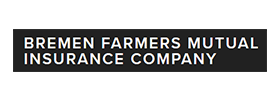In the face of an unexpected disaster, it’s good to know you have insurance. Say you got into a fender-bender at the grocery store and now you’re having to submit a claim to your insurance company. Big deal, right? We pay premiums for times like these.
Unfortunately, it’s not so cut and dry. Before you receive your settlement, your insurance company may need to conduct a thorough investigation into the accident to determine your percentage of fault and potential liability. Other factors can contribute to a longer wait time for claim payouts. Here’s why.
The insurance claims process, step-by-step
The process of filing an insurance claim can be pretty complicated by itself. There are several steps, but it all begins with getting in touch with your insurance company (or agent) and letting them know about the accident. Policyholders living in no-fault insurance states will always be in contact with their own insurance company, but policyholders in tort (at-fault) states may need to contact the responsible party’s insurance company to file a claim for their injuries or damages.
First contact
The claims process begins as soon as you get in touch with your insurance company, agent (and have them notify your insurer), or in at-fault states, the responsible party’s insurer. This step acts as the first notice of loss, where you inform your/the insurer of your intention to file a claim.
Claim investigation
The grunt work begins. Insurance companies will sent out their individual agents to investigate the accident and fully determine liability. At this point, providing as much information about the incident as possible is critical. Dashcam footage, images, witness statements, receipts, and any other evidence you can conjure is absolutely critical and can expedite the process. The process proceeds when a claim is deemed valid and liability is more or less determined.
Policy review
At this stage, coverage is evaluated to see if each claimant has applicable insurance and which coverage the claim falls under. If coverage exists and can be identified, the claim can proceed. Policies can be complex, however, so reviewing policies can take time.
Damage evaluation
Adjusters and appraisers will need to analyze the extent of the damages done to either your property or vehicle (whichever you’re making a claim for). In extreme cases with auto claims, this can involve a teardown of the vehicle to investigate internal damages. If the claim is for an injury, numerous medical experts may be involved. Either way, this process can take some time.
Arrangement of payment
Once damages have been fully evaluated, you may begin to have your payment arranged. Payment can come from a few different places, so while this step sounds fairly straightforward, it can also take a fair bit of time to process.
If your insurer disputes the claim, this can delay the process of receiving your settlement even more. You may need to hire a lawyer to provide additional proof or go back and forth with your agent (who will advocate for you during this time).
Insurance claims can be complicated, especially if there is more than one party involved
Filing a claim for a rollover or collision with a highway barrier is pretty straightforward, but things get messier every time there’s an additional party. If you’re the only person involved in the claim, it’s easier to investigate than if there are multiple parties.
With multiple parties, insurance companies need to determine liability or may even need to handle multiple claims at once. This can extend the process even more. But other factors are at play as well, which may be increasing the time it takes to receive your settlement without you even knowing.
There’s a lack of labor in the insurance industry
Appraisers, adjusters, and claims investigators are far and few right now in the insurance industry, making the overall process for claims all the more difficult. It can take longer for these workers to make it out to investigate damaged property and even longer for them to come to a final decision.
According to Insurance Business Magazine, the insurance industry is estimated to lose around 400,000 workers by 2026. This is in part as a result of a huge percentage of workers nearing retirement age, but the labor shortage could also be yet another impact of the COVID-19 pandemic.
Insurance fraud calls for more thorough investigations
The more insurance fraud there is, the more insurance companies will need to strengthen their resolve to catch potential fraudsters. So, even if you’re not intending to commit fraud or have committed in the past, your insurance company may likely want to perform a thorough investigation of your accident to ensure all their bases are covered. This isn’t because they don’t trust you in particular – it’s just become procedure as a result of rising fraud incidents.
Unfortunately for all the honest policyholders, this means that claims can take longer, even if they’ve been a trusted policyholder and always paid their premiums on time. It can seem like you’re getting the short end of the stick despite always doing your part, but it’s unfortunately the price we’re all having to pay.
The insurance claims process can be a confusing time, and it can be especially difficult if you feel like your claim is taking a long time, but until there are major shifts in the insurance industry, this may be the way it is for some time. Claims take, on average, between 30-45 days to settle completely, barring extreme circumstances. If you’re unsure about what next steps to take when processing your claim or want the advocacy of your agent, give us a call.































